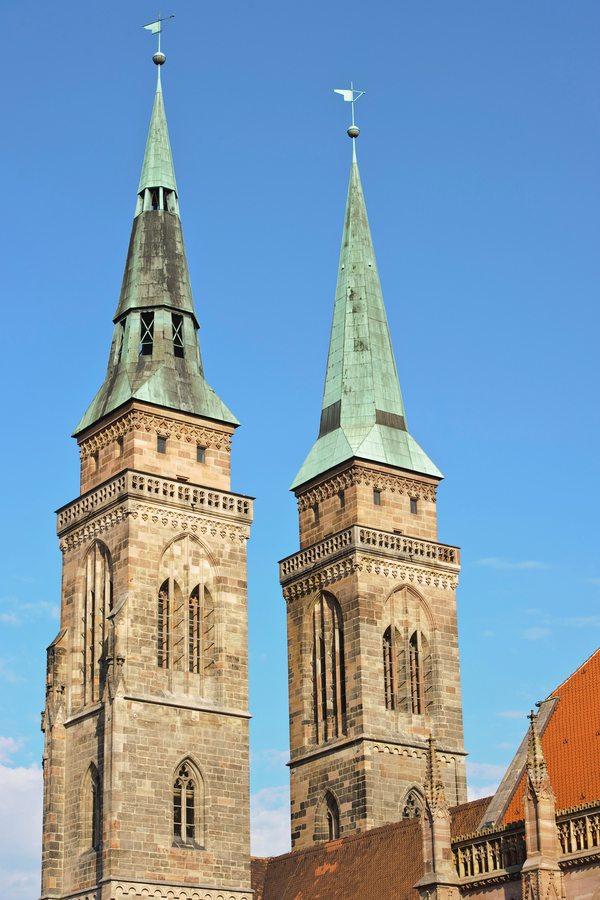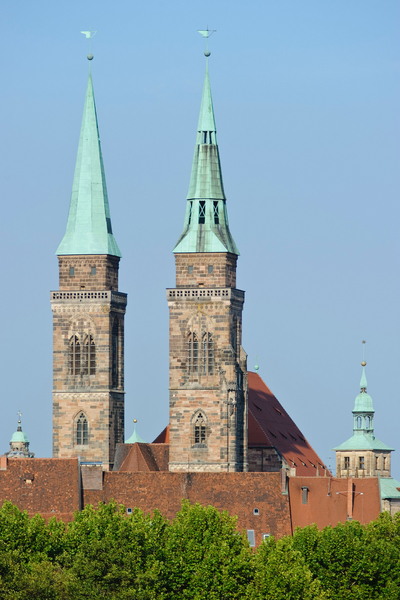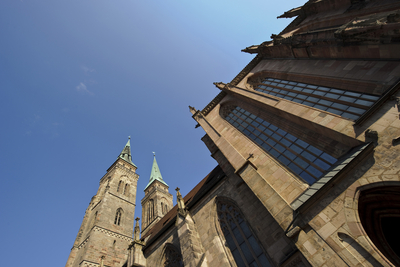Nuremberg's oldest city parish church was built around 1215 as a three-aisled Late Romanesque pillared basilica with two choirs. As early as 1309 the original side aisles were widened and altered in the Gothic style.
Destroyed during World War II like the rest of the city, St. Sebald was reconstructed in 1957 and reconsecrated. The reliquary shrine (ca. 1397) in the tomb cast in bronze by Peter Vischer and his sons (1508-1519) is prominently located in the interior of the church. The bones of Nuremberg patron saint Sebaldus are presumed to rest in the silver embossed “casket”.
Key facts:
- together with St. Lorenz and the Church of Our Lady one of the three most important churches in Nuremberg
- former church of the city council
- houses the shrine of St. Sebald, patron saint of the city
- St. Sebald has a valuable collection of art, including many pre-Reformation treasures




